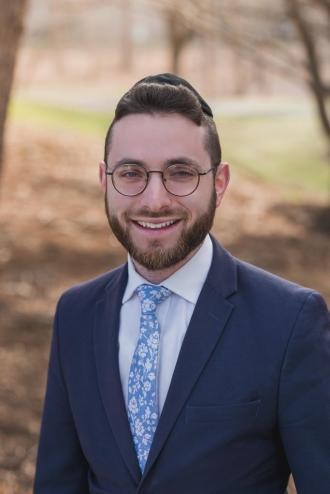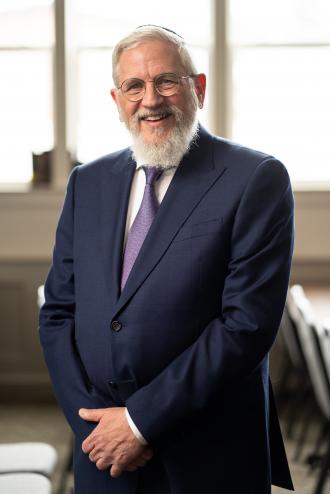Dedicated by Mrs. Sarah Shane in memory of her mother,
Mrs. Gussie (Henna Gittel) Poliakoff, whose yahrzeit was on 2 Adar.
Bubby, or 'Aunt Gussie' was a stalwart of the Baltimore Jewish community. The eldest daughter of Rabbi and Rebbetzin Schwartz, she not only was their right hand in the founding of the Talmudical Academy and Bais Yaakov, she dedicated herself to the community in many other areas. AMIT, Congregation Bnai Jacob Shaarei Zion, Ner Israel, and many more organizations and individuals were the beneficiaries of her untiring efforts.
Her four children and many grandchildren and great grandchildren, nieces and nephews were her pride and joy.
An American industrialist once came to visit the Chofetz Chaim of blessed memory. The Chofetz Chaim proudly gave the man a personal tour of his Yeshiva and asked him if he too would like to be a partner in the building of Torah. The man looked at the saintly Rabbi. He observed the young teenagers studying Torah in the cold underappointed room. He witnessed the sincerity and genuineness of everything he saw. He thought hard. Finally he magnanimously replied, “Rebbe, I'll fund the whole thing!” Only the Chofetz Chaim could merit such a miracle. The Chofetz Chaim quickly took the man's hand and blessed him with all of G-d's blessing and then said, “My dear friend, you are indeed a very generous and righteous person, but as much as I would like to, I can not accept your offer. The holiness you see and feel, is the result of the contribution of hundreds of people. A loving tear accompanied each small donation. It is upon those tears that we have built success. It is upon those souls that the Shechina rests.”
Wherever we went we never forfeited our spiritual centers. Since the destruction of Jerusalem, wherever we wandered, as soon as we put our feet on the ground we built a synagogue. That Shul became a mikdash m'at.
The whole life of the Jew, from birth to the very end surrounded the synagogue. It was in the Synagogue that the Jew sought and found refuge and solace from his or her day to day troubles.
The synagogue had many things to offer; friendship, a sense of belonging, a place to study Torah, entertainment and a burial plot. But there was one major ingredient that made the synagogue the epicenter for the Jew. The Shechina; the presence of G-d. The moment we dedicated a synagogue, Hashem’s presence was felt there. This spirituality, that was actually palpable, was the dynamo that energized the Shul and everyone who visited it - the Shechina made the experience unique.
We all know how to build buildings and we have good ideas for programming. We know community members that are capable of understanding sophisticated constitutions. But how do we get Kedusha into a Shul? What is the secret ingredient that brings the presence of Hashem into the Synagogue? How do we get to a point where people come in and find the Shechina?
What brought the presence of Hashem into a tent in the desert? Hashem told Moshe that when he builds the Mishkan he must include every Jew, not just their money or their handiwork, but their hearts. “Kol Ish asher yidveno libo.” G-d wanted the hearts and souls of the people. It was the collective spiritual and emotional input of all the people of Israel that caused the Shechina to rest upon the building. Everyone contributed his or her soul.
In the Mishkan there was only one kind of wood; shitim or acacia wood. The Ark was built out of acacia, the table for the showbread was built out of acacia and the structure of the tent itself was built from “standing poles of acacia'. We were in a desert; where did we get all of this acacia lumber? We know there was a miraculous well in the desert and that food was sent down to us from the heavens, but we are not told of a Home Depot that followed us out of Egypt!
Rashi gives the answer. Generations earlier, when our forefather Yaakov moved to Egypt he mysteriously planted acacia trees in Goshen. He instructed his children to nurture the trees and let them grow very large. Yaakov Avinu told his children that a time would come that the Jewish people would leave Egypt, but before they leave they should cut these enormous trees down and take the wood with them into the desert. Hundreds of years of Jewish care and nurturing were invested into this acacia wood!
If we would have miraculously stumbled upon an acacia forest in the desert the timber would have been missing a major ingredient. It would have been missing the heart and prayers of our father Yaakov and his children for generations. It would have been missing the nurturing of thousands of Jews who may have given from their drinking water to care for their grandfather's garden. Just any acacia wood wouldn't do. This wood had to bring the Shechina into the camp and it therefore required the heart and soul of the Jewish people.
As for us, we too can usher the Shechina into our lives, into our homes and into our Synagogues. Not just by belonging, not just by attending or affiliating, but by committing our heart and soul. When we give up little things that are so important to us, when we walk in the snow to Shul, and when we include the place of Hashem in our schedules and even in our prayers, we nurture our surroundings. We can achieve the presence of the Shechina.
-















